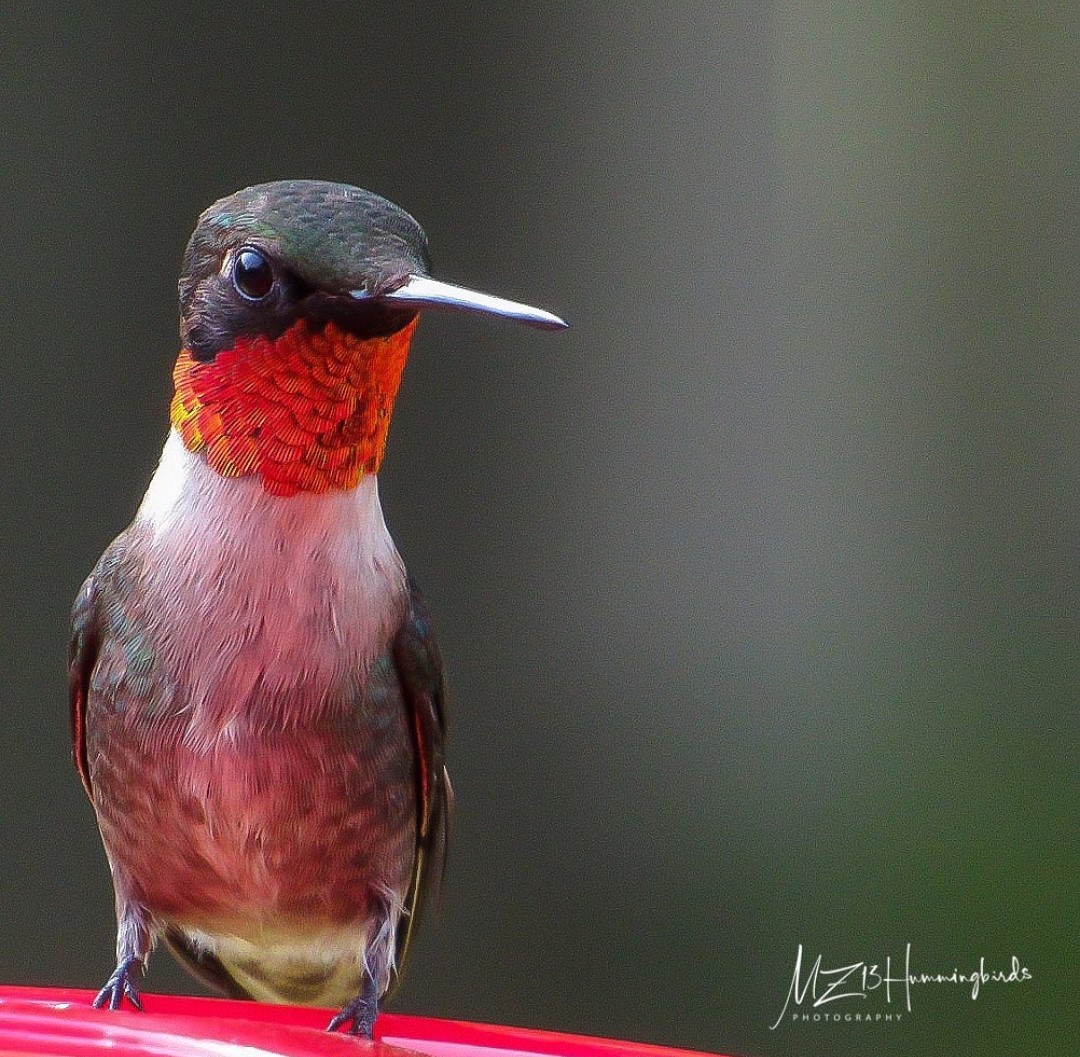This post contains affiliate links.
When do hummingbirds arrive in Illinois?
Illinois 8 migrating hummingbirds begin arriving as early as March but May is the primary month for arrival. Many continue north to their preferred nesting area, somewhere near their own birth.
The last of spring migrating hummingbirds are gone by mid-June but many will stay in Illinois for the summer.
Illinois migrating hummingbirds begin their northern journey from as far away as Panama, or as close as Mexico.
Some arrive in Illinois as early as March, but by the end of June, all hummingbirds that are migrating further than Illinois are gone from Illinois.
Hummingbirds starting their spring migration from Panama need to fly about 3,871 miles (if they choose to stay over landmass) or 2,323 (if they choose to fly over the Gulf of Mexico) to reach Chicago.
Hummingbirds starting their journey from Mexico need to fly 1,426 miles (from the Mexican border at Brownsville Texas) to reach Chicago.
Migrating hummingbirds arrive in Illinois as early as March but May is the most active month for migration.
According to the Missouri Department Of Conservation, if Illinois hummingbird enthusiasts start feeding hummingbirds when they arrive, there is less of a chance they will move on and will decide to spend the summer in Illinois.
The first migrating hummingbirds will be males followed by the females about a week later. The males arrive first to stake out the territory that they will defend as they try to attract a female.
Ruby-throated hummingbirds are by far the most commonly seen in Illinois and will be the first migrating hummingbirds.
Keep your eye out for the brightly colored gorget of the male. The females will start showing up at your feeders about a week later.
See my article: How to Identify a Hummingbird’s Gender in 4 Easy Steps
Are there hummingbirds that live in Illinois year-round?
There are no hummingbird species that live in Illinois year-round, however, the Rufous, Broad-billed, and Anna’s hummingbirds have been documented as being seen in the middle of winter in Chicago.
Hummingbirds seen in the middle of winter in Chicago:
- Rufous
- Broad-billed
- Anna’s
Rufous Hummingbirds:
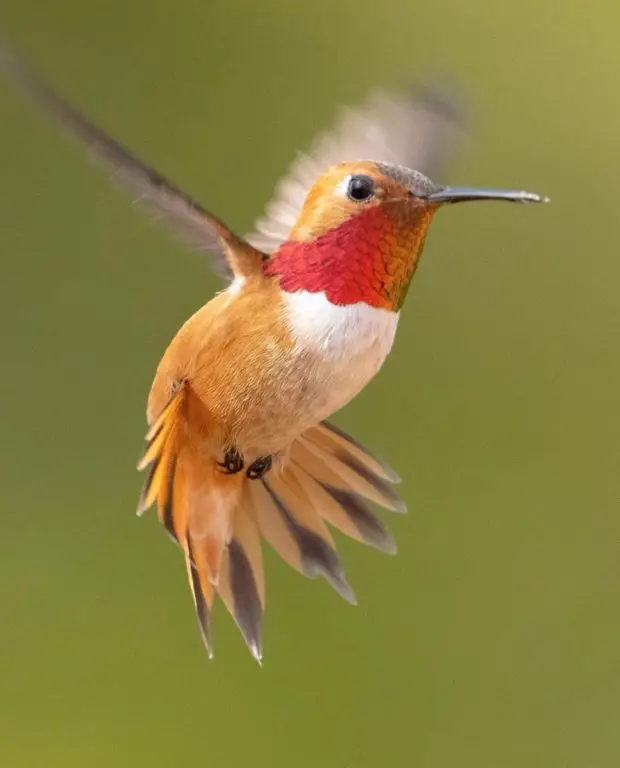
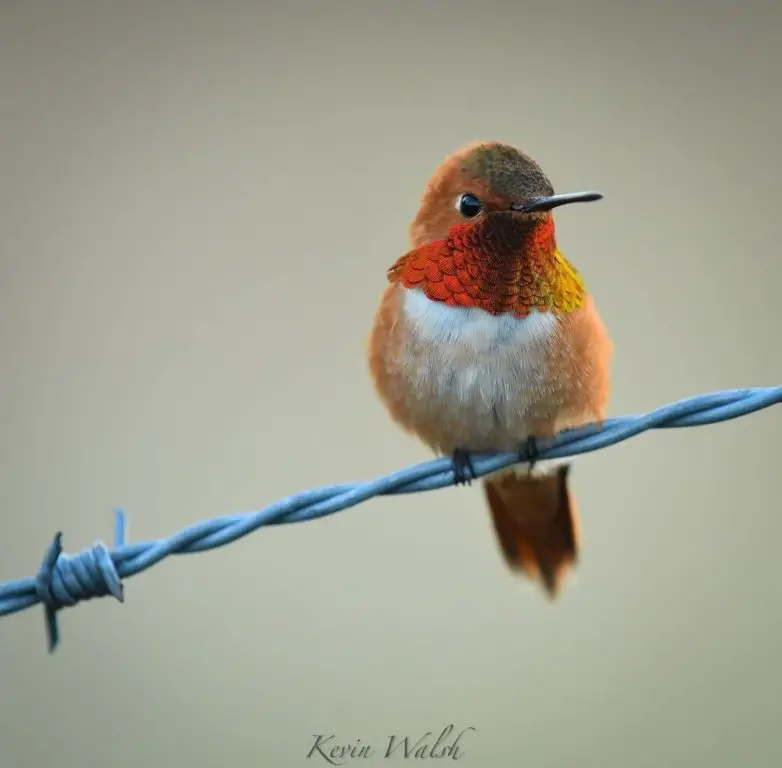
Photo by: Kevin Walsh
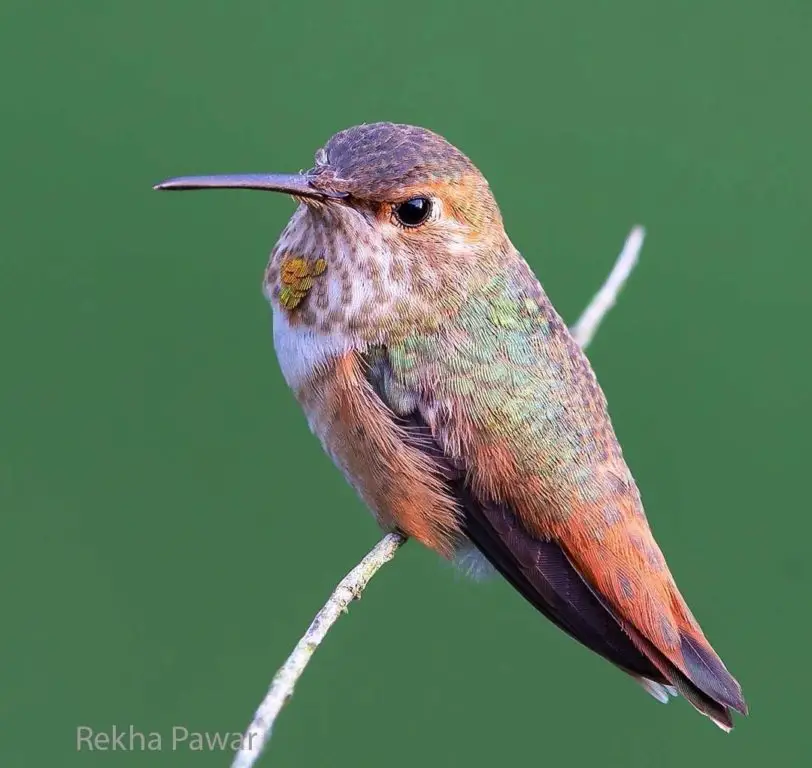
Photo by: Rekha Pawar
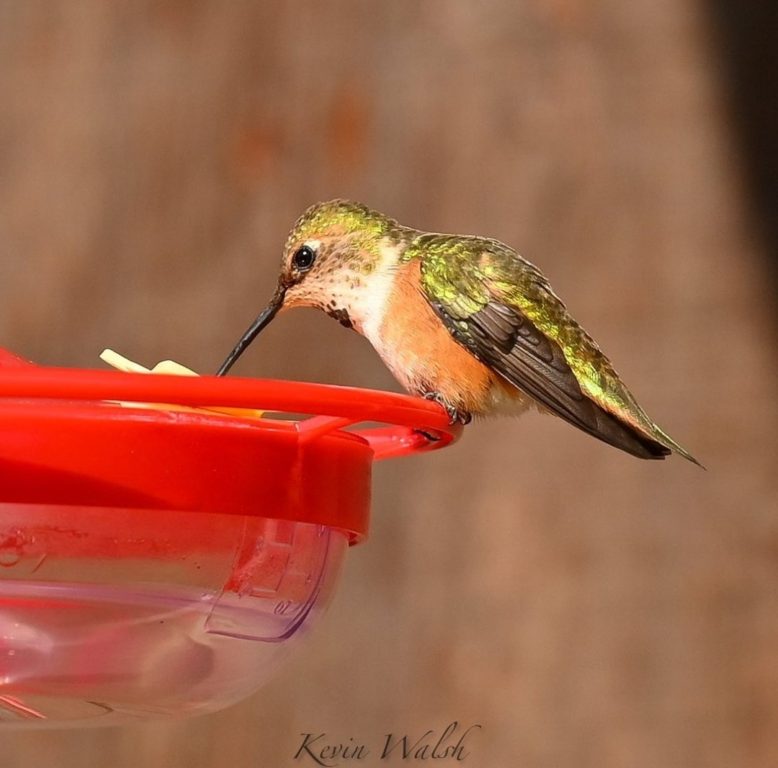
Photo by: Kevin Walsh
Broad-Billed Hummingbirds:
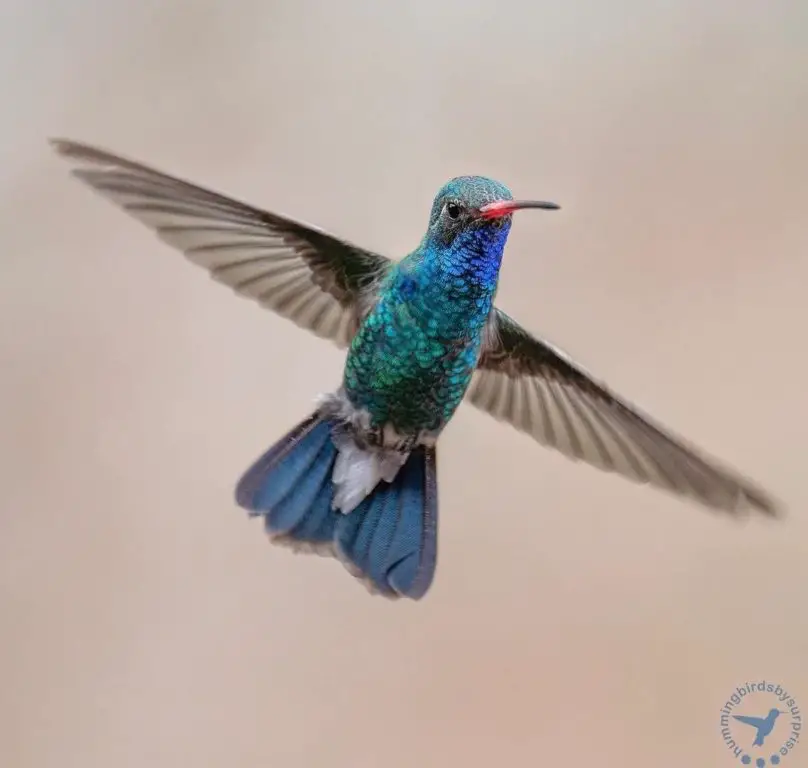
Photo by: hummingbirdsbysuprise
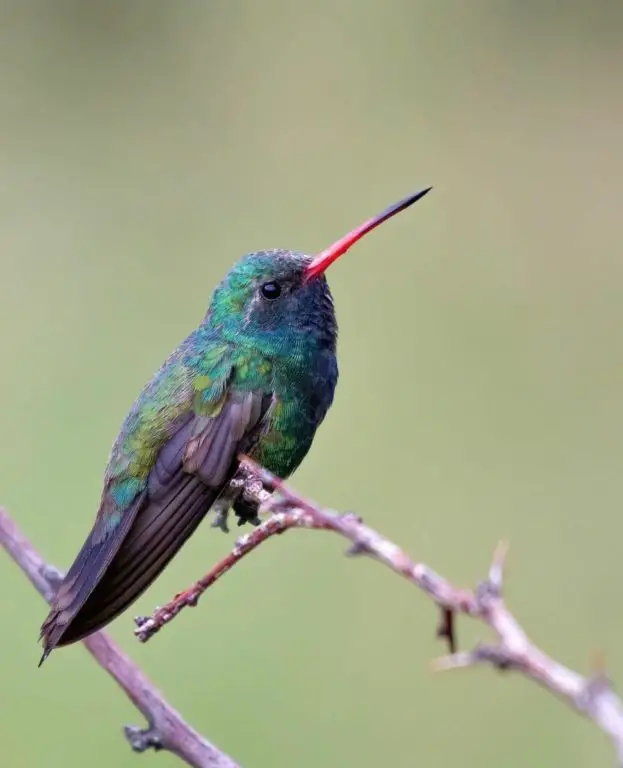
Photo by: Aaron Gomperts

Photo by: hummingbirdsbysuprise
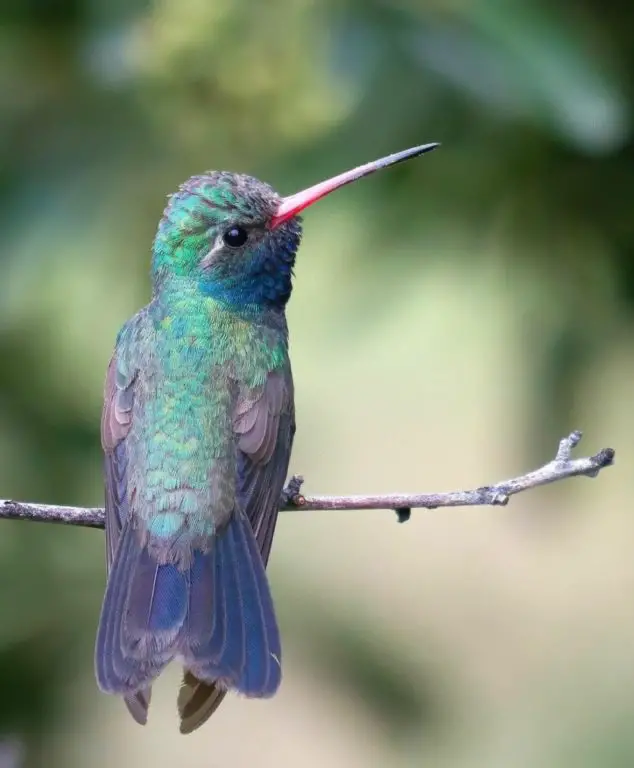
Photo by: Aaron Gomperts
Anna’s Hummingbirds:
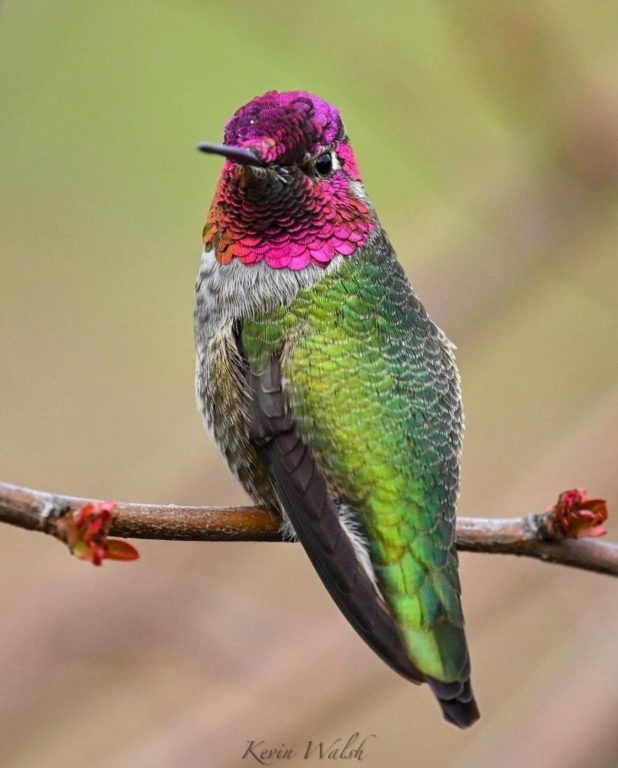
Photo by: Kevin Walsh
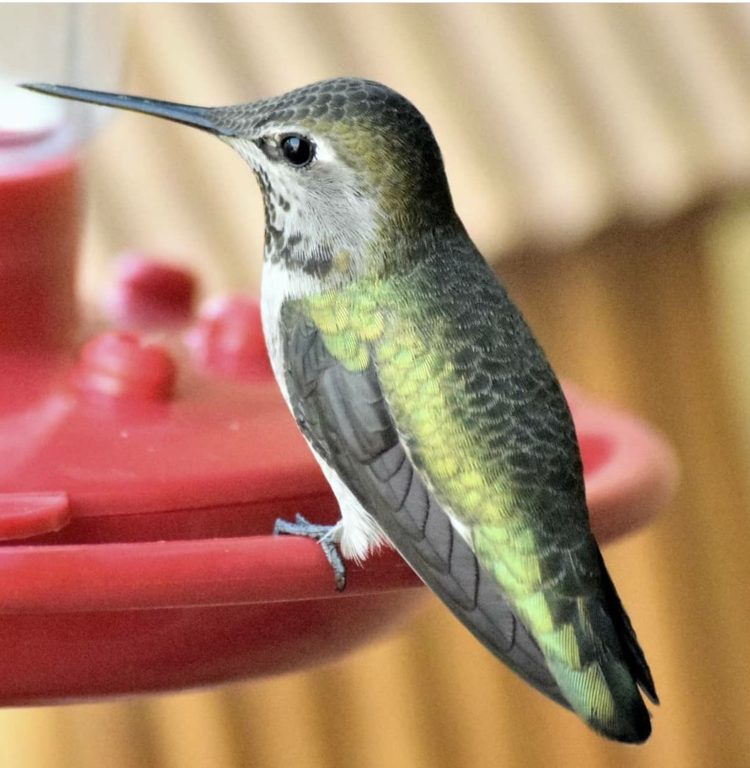
Photo by: Mehta.vishal.360
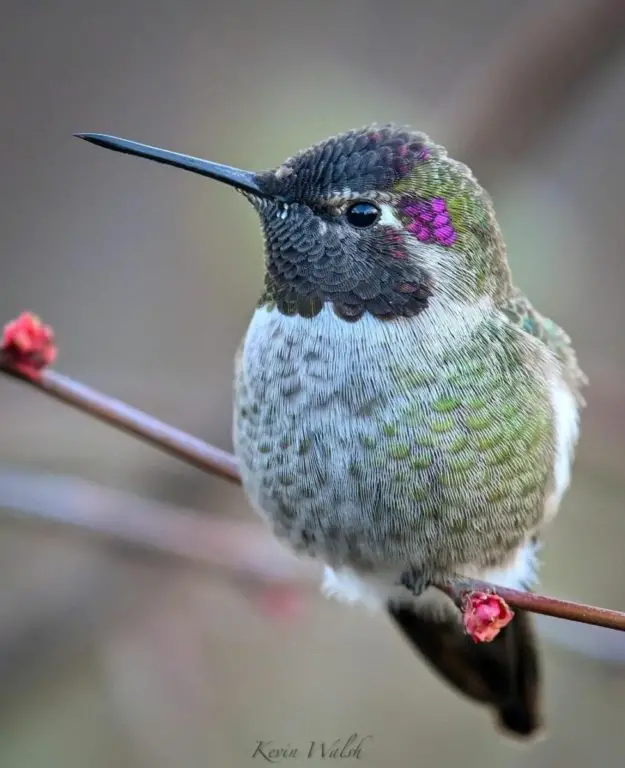
Photo by: Kevin Walsh
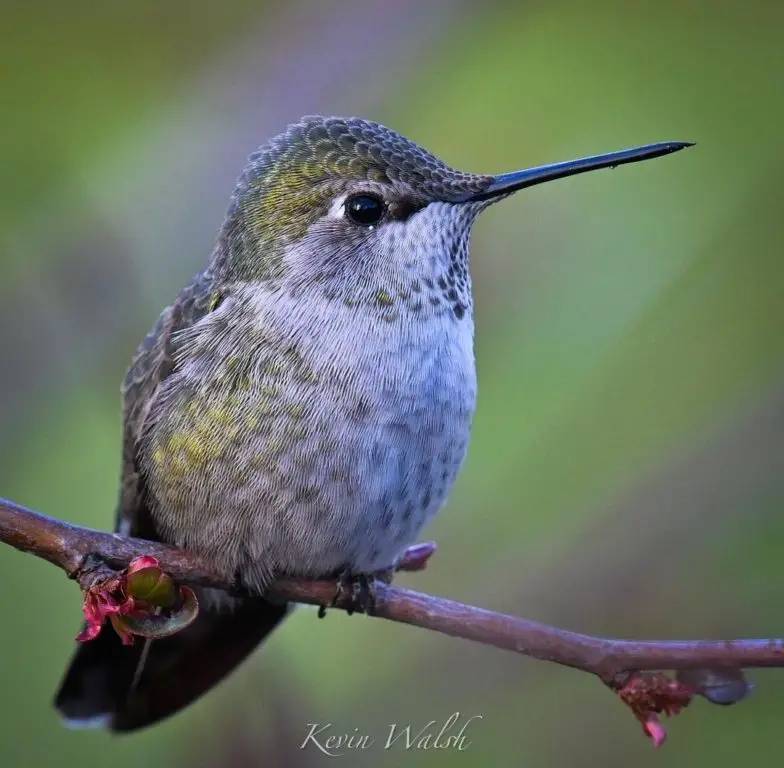
Photo by: Kevin Walsh
Hummingbirds are much more cold-tolerant than one might expect.
According to eBird.org, some banded hummingbirds have been documented in temperatures of -9 degrees Fahrenheit with a wind chill of -36 degrees Fahrenheit.
What are the most common hummingbirds seen in Illinois?
The most common hummingbird seen in Illinois is the Ruby-throated with the Rufous hummingbird being a very distant second.
On average, out of 10,000 hummingbird sightings in Illinois, 9,926 will be Ruby-throated and 38 will be Rufous hummingbird sightings.
Hummingbird Illinois sightings from the most common to the least common seen.
| Year-Round: | Out of 10,000 | Out of All |
| None | 0 | 0 |
| Seasonal: | ||
| Ruby-throated | 9,926 | 99.3% |
| Vagrant: | ||
| Rufous | 38 | 0.38% |
| Broad-billed | 29 | 0.29% |
| Mexican Violetear | 4.59 | 0.046% |
| Anna’s | 1.4 | 0.014% |
| Allen’s | 0.10 | 0.001% |
| Black-chinned | 0 | 0.00% |
| Broad-tailed | 0 | 0.00% |
These are the number of sightings at the time of posting this article.
See current sighting numbers for Illinois by clicking the links below (in order of frequently seen):
Ruby-throated – Seen throughout the entire state of Illinois.
Rufous – Seen scattered throughout the state with a concentration in the Chicago area.
Broad-billed – Seen in the Canton, Springfield, and Charleston areas.
Mexican Violetear – Seen from just north of Highland Park to the Wisconsin border.
Anna’s – Seen just north of Peoria.
Allen’s – Seen just west of Decatur.
Black-chinned – None seen in Illinois at this current time but are seen at the northern border of Kentucky with Illinois’ southern border. Two of Google’s top-ranking websites list the Black-chinned hummingbird as an Illinois hummingbird.
Broad-tailed – None are seen in Illinois at this current time but one of Google’s top-ranking websites lists the Broad-tailed hummingbird as an Illinois hummingbird.
What hummingbirds breed and nest in Illinois?
The Ruby-throated hummingbird is the only hummingbird that breeds and nests in Illinois.
See current breeding maps for hummingbirds seen in Illinois (in order of frequency seen in Illinois):
Ruby-throated
Rufous
Broad-billed
Mexican Violetear
Anna’s
Allen’s
Black-chinned
The entire reason for northern migration, much like salmon swimming upstream to their place of birth to lay eggs, is to return to the area where they were born. There the female builds a nest, mates, and raises a family.
Once the female hummingbird reaches the breeding grounds the focus turns to building a nest and then finding a partner with which to mate.
Female hummingbirds prefer building nests 10 to 20 feet off the ground in deciduous trees.
It will take her between 5 and 7 days to construct the nest of materials such as plant down, moss, and fine plant fibers, decorated with lichens and held together by spider webs.
See my article: Hummingbird Parents: (Mating to Nesting)
See my article: Baby Hummingbirds: (Egg to Fledgling)
Each species of male hummingbird has its own unique mating dance ritual of courtship to attract a female. They do perfectly choreographed dives and dance maneuvers to attract a flirty female.
See my article: Hummingbird Dance: 5 Interpretive Explanations
There is no penetration during the mating ritual as male hummingbirds do not have any external sexual organs.
The hummingbird mating process only lasts for approximately 3-5 seconds while the cloacae (kloh-ay-see) of both hummingbirds are pressed together in what is called the “Cloacal Kiss” (kloh-a-coal kiss).
After the Cloacal kiss, the female must begin building the nest immediately.
Hummingbirds usually lay 2 eggs per brood, one each on consecutive days.
Most hummingbirds have 2 broods per year, but depending on migration timing and day-length time in their nesting destinations, some hummingbirds can have more than 2 broods per year.
In Illinois, nesting hummingbirds usually have 2 broods per year but some may have time to work in a third brood.
When should I put up my hummingbird feeders in Illinois?
Illinois hummingbird enthusiasts should put out hummingbird feeders in March to attract the very earliest arriving migrating hummingbirds.
The majority of migrating Illinois hummingbirds will arrive in May.
If migrating hummingbirds are fed when they start to arrive there is less chance of them moving on.
According to the Missouri Department Of Conservation, If Illinois hummingbird enthusiasts start feeding them when they arrive, there is less chance they will move on and will decide to spend the summer in Illinois.
Male hummingbirds will be the first to arrive followed by female hummingbirds about a week later.
Migrating hummingbirds will continue to arrive until about mid-June.
Hummingbirds seen in Illinois after mid-June will be hummingbirds that will spend their entire summer in Illinois.
Be sure to fill your hummingbird feeders with good quality nectar solutions, making your own feeder nectar is best.
See my article: Forget Commercial Hummingbird Food, Try Making Homemade Nectar
See my article: The One Thing You Need to Eliminate From a Hummingbird’s Diet
How long do hummingbirds stay in Illinois?
Illinois’s migrating hummingbirds will start arriving as early as March and most will be gone by the end of October.
Some Rufous, Broad-billed, and Anna’s have been seen in the Chicago area during winter, but most will migrate south for the winter.
No hummingbird species live in Illinois year-round.
Hummingbirds are much more tolerant of cold temperatures than most people realize.
According to eBird.org, some banded hummingbirds have been documented in temperatures of -9 degrees Fahrenheit with a wind chill of -36 degrees Fahrenheit.
See my article: 3 Reasons Why Hummingbirds Are Banded
Some migrating seasonal hummingbirds may choose to over-winter in Illinois.
Those brave souls that chose to over-winter in Illinois, mostly southern Illinois, and those too old or injured to migrate will be the only likely hummingbirds Illinois hummingbird enthusiasts will see during the winter.
The most likely migrating hummingbird that might choose to spend the winter in Illinois would be the very cold tolerant Rufous hummingbird.
Illinois is on a slightly southern latitude than Pennsylvania and the Valley Forge Audubon Society reports wintering sightings of the Allen’s, Calliope, Rufous, and Black-chinned hummingbirds in Pennsylvania.
Hummingbirds have exceptional memories and will remember every flower or feeder they visited on the spring migration and will return to those nectar sources on their return to southern migration in the fall.
See my article: Hummingbird Adaptation and Remarkable Ability to Locate Food
The most common hummingbirds Illinois will see during the hot summer months will be the Ruby-throated hummingbird with the Rufous hummingbird being a very distant second.
When the obstacles of the summer heat are difficult to manage and unbearable, finding ways to keep your hummingbirds happy and hydrated with cool nectar can be critical.
See my article: How to Help Hummingbirds in Hot Weather
When do hummingbirds leave Illinois?
Illinois’ migrating hummingbirds begin leaving the state in early September, and by late October most have migrated to their over-wintering areas in Mexico and Central America.
No hummingbirds live in Illinois year-round.
Most of Illinois’ migrating hummingbirds are gone by the end of October but a few stragglers might stay until the end of the year.
Some Rufous, Broad-billed & Anna’s have been seen in the Chicago area during winter, but most will migrate south for the winter.
A few older hummingbirds will be the first to start the fall migration, maybe as early as late August, depending on their strength and energy, with the youngest hummingbirds finishing the fall migration by mid-November.
The oldest hummingbirds will be the first to start migration according to an article from the University of Southern Mississippi.
This elongated migration time frame ensures late straggling migrants have enough food available to fuel their bodies before making the long taxing migration south for the winter.
Some migrating hummingbirds Illinoisans will possibly see during the winter are migrating hummingbirds that are too old or injured to migrate.
Leaving hummingbird feeders up during fall migration will not discourage hummingbirds from migrating but will give them the nutritional energy to help them in their long migration route.
Hummingbirds gain about 50% of their body weight in preparation for the long migration process.
Hummingbird migration is triggered by the circadian (internal daily clock) and the circannual (yearly internal clock) rhythm.
Changes in the weather, temperature, time of the season, the decline in the food supply, and decreased amount of sunlight because of shortening days are all factors that trigger an individual hummingbird’s instinct to migrate.
As with spring migration, male hummingbirds are the first to begin the southern migration in the fall. The female migrating hummingbirds will begin their southern fall migration as soon as they have completed raising their offspring to the ability to migrate themselves.
When should I take down hummingbird feeders in Illinois?
The best time to take down hummingbird feeders for the winter in Illinois is December or when no hummingbirds have been seen at the feeders for a couple of weeks.
Some Illinois leave feeders up all winter to feed the rare winter hummingbirds and those too old or injured to migrate.
The dilemma hummingbird enthusiasts struggle with every year is whether to leave the hummingbird feeders up all year or take them down during the winter.
The problem becomes how to keep the hummingbird nectar from freezing.
See my article: 11 DIY Ways To Keep Hummingbird Nectar From Freezing
One way to keep hummingbird nectar from freezing is to purchase a hummingbird feeder warmer, such as the Hummer Health feeder heater.
However, it only works with a limited style of hummingbird feeder such as Aspect’s HummZinger feeder.
Some Illinois hummingbird admirers leave hummingbird feeders up all winter long to provide life-nourishing nectar to Illinois’ most likely rare winter visitors, the Rufous, Broad-billed, and Anna’s hummingbirds.
These hummingbirds have been seen in the Chicago area during the winter.
Most Rufous, Broad-billed, and Anna’s hummingbirds will not spend the winter in Illinois and will decide to migrate south to Mexico for the winter.
The selfless act of keeping hummingbird feeders up all winter also provides nectar to other migrating species unable to migrate because of injury or old age.
See my article: 11 DIY Ways to Keep Hummingbird Nectar From Freezing
See my article: Should I Keep My Hummingbird Feeder Out During the Winter?
Hummingbird enthusiasts that leave hummingbird feeders up all winter provide much-welcomed nutrition for late migrators and hummingbirds too old or injured to migrate.
Hummingbirds are much more tolerant of cold temperatures than most people realize.
According to eBird.org, some banded hummingbirds have been documented in temperatures of -9 degrees Fahrenheit with a wind chill of -36 degrees Fahrenheit.
See my article: 3 Reasons Why Hummingbirds Are Banded
Taking hummingbird feeders down mid-winter during episodes of below-freezing temperatures could be fatal to hummingbirds depending on these winter-time feeders.
See my article: 11 DIY Ways to Keep Hummingbird Nectar From Freezing
How long does it take an Illinois hummingbird to migrate?
It takes an Illinois hummingbird 47 hours of flying at its average flight speed of 30mph to fly from Chicago to the Brownsville Texas Mexican border 1,426 miles away.
Chicago hummingbirds migrating to Panama 2,323 miles across the Gulf of Mexico or 3,871 over land, will need to fly 77 or 129 hours respectively.
Some fly at a relaxed distance as slow as 1 hour per day, and others fly up to 500 miles non-stop in about 20 hours as some do while migrating across the Gulf of Mexico.
Hummingbirds do not migrate in flocks as do other migrating birds.
Hummingbirds migrate individually on their own personal time clock.
This staggered migration pattern ensures resources are not consumed and depleted all at one time.
As migration approaches, hummingbirds routinely gain 25% to 50% of their body weight by consuming increased quantities of nectar from feeders and flowering plants as well as catching an increased quantity of bugs mid-air for protein.
This increase in body fat helps fuel the hummingbird on its long migration journey.
Expect to see an increased volume of southern migrating hummingbird visitors to your feeders in Illinois during this fall migration from September through October.
The hummingbirds that visited your feeders during the spring migration will remember exactly where your feeder is located and will most likely revisit that same feeder on their way to their over-wintering area in Mexico and Central America.
See my article: Hummingbird Adaptation and Remarkable Ability to Locate Food
Where do Illinois hummingbirds go in the winter?
Illinois migrating hummingbirds, the Ruby-throated, Rufous, Allen’s, Anna’s, Black-chinned, Broad-billed, Broad-tailed, and Mexican Violetear hummingbirds travel south to Mexico and Central American countries with the exception of Allen’s hummingbird which over-winters in southern California.
Many Illinois hummingbirds are seen in various locations throughout the USA during the winter months.
Click the links to see the maps of where they are seen during the winter months.
Note: Be sure to turn on all viewing options on the left-side navigation panel.
Allen’s – Southern California with scattered areas throughout the USA where Allen’s hummingbirds have been seen during the winter in Texas, Tennessee, and as far north as Maryland, New York, and Wisconsin.
Anna’s – Southern California and upper parts of Baja and Mexico with scattered areas throughout the USA where Anna’s hummingbirds have been seen during the winter including Texas, Missouri, Illinois (Chicago area), Maryland, Utah, and Idaho.
Black-chinned – Mexico with scattered areas throughout the USA that Black-chinned hummingbirds have been seen in the winter months including Texas, Louisiana, Mississippi, Florida, Georgia, Arkansas, North Carolina, and as far north as Maryland and Pennsylvania.
Broad-billed – Mexico with scattered areas throughout the USA that Broad-billed hummingbirds have been seen in the winter months including Texas, Arizona, Louisiana, Florida, and Utah
Broad-tailed – Mexico and Guatemala
Mexican Violetear – Guatemala and Honduras with scattered areas throughout the USA where Mexican Violetear has been seen in the winter months including Arizona, Texas, and Louisiana.
Ruby-throated – Mexico, Guatemala, Honduras, El Salvador, Nicaragua, Costa Rica, and Panama with scattered areas throughout the USA that Ruby-throated hummingbirds have been seen in the winter months including New Mexico, Texas, and Florida along the east coast.
Rufous – Mostly Mexico with scattered areas throughout the USA where Rufous hummingbirds have been seen in the winter months, including New Mexico, Texas, Louisiana, Mississippi, Georgia, Florida, Tennessee, North and South Carolina, Virginia, Kentucky, Missouri, Illinois, Ohio, Pennsylvania, New York, Vermont, Michigan, Wisconsin, and Minnesota.
All hummingbirds have excellent memories and can remember every flower or feeder they visited during spring migration and will return to those locations along their migration pathway year after year.
See my article: Hummingbirds Found in Illinois: (Pictures and Sounds)
Check out my other posts on Hummingbird Questions
Happy Hummingbird Watching!
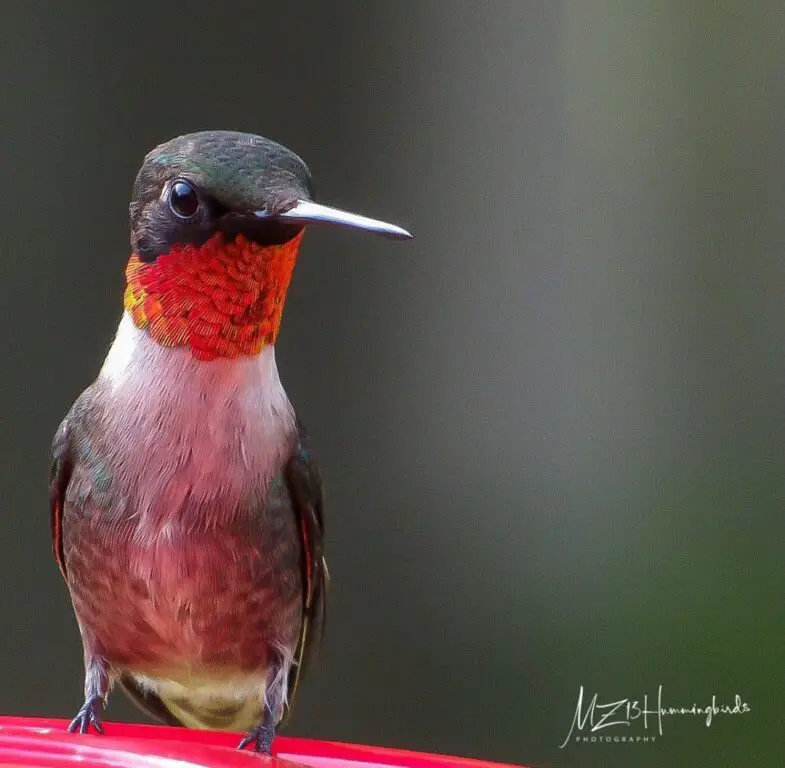
Photo by: mz13hummingbirds
Backyard Visitors participates in affiliate programs which compensate us for referring traffic.

